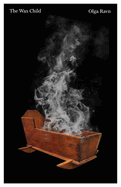
Danish novelist and poet Olga Ravn hauntingly combines Nordic folklore and historical sources to fiercely reimagine the experiences and tribulations of a 17th-century noblewoman accused of witchcraft in The Wax Child. She reunites with award-winning translator Martin Aitken after her 2021 International Booker Prize-shortlisted novel, The Employees.
The titular wax child is "shaped in beeswax... made like a doll the size of a human forearm" by Christenze Kruckow in Nakkebølle on the Danish island of Funen. It is christened under the still darkness of night. As Ravn's narrative opens, Christenze is dead, but the abandoned wax child insists on bearing witness to its mistress's horrific demise.
Christenze, born noble but impoverished, works at Nakkebølle Manor as a servant, while also befriending the manor's young wife, Anne. After losing 15 infants over 12 years, Anne "cast her gaze at Christenze." Anne convinces others that Christenze is behind the murders of her babies, prompting her husband to "initiate proceedings against [Christenze] with the charge that she did harm by means of witchcraft." Christenze flees to northern Aalborg in 1616. First she meets Maren and is "enchanted by the forbidden love of a woman." Maren introduces her to a collective of strong wives. Among them is Elisabeth, who is abused by her husband and who eventually betrays these women to his machinations.
Ravn's author's note illuminates fascinating historical provenance, the "letters, ledgers, court documents and theological texts" associated with Danish witch trials recorded between 1596 and 1621. The "spells" recorded throughout are also borrowed, from "so-called black books, grimoires and other such works." Four centuries later, Ravn enthrallingly immortalizes those long-silenced voices. --Terry Hong

